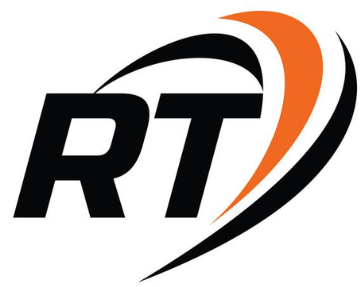Imginn is an online platform that allows users to explore and share images from all over the world. With its vast collection of visual content, imginn has become a go-to source for inspiration, creativity, and entertainment. However, behind this successful platform, there is a complex and sophisticated architecture that keeps it running smoothly. In this article, we will dive into the architecture of imginn and understand how it works.
Introduction to imginn

Imginn was founded in 2010 by a team of passionate photographers and tech enthusiasts. Their goal was to create a space where people can discover and share beautiful images from all corners of the globe. Today, imginn has more than 500 million active monthly users and over 8 billion images shared on the platform. The success of imginn can be attributed to its user-friendly interface, curated content, and seamless performance. However, behind all these features, lies a robust architecture that ensures the smooth functioning of the platform.
The Three-Tier Architecture of imginn

The architecture of imginn can be divided into three tiers – presentation layer, application layer, and data layer. Each tier has a specific purpose and plays a critical role in the overall functionality of the platform.
Presentation Layer
The presentation layer is the topmost layer of imginn’s architecture. It is responsible for the visual representation of the platform and handles all the user interactions. This layer comprises of the frontend components such as the user interface, design, and layout. Imginn’s interface is simple, clean, and minimalistic, allowing users to focus on the images. The use of high-quality images and a consistent color scheme adds to the aesthetic appeal of the platform.
User Interface (UI)
The user interface of imginn is designed to be intuitive and user-friendly. The UI is optimized for both desktop and mobile devices, making it accessible to a wider audience. The interface consists of various elements such as the search bar, navigation menu, and feed, all of which are strategically placed for easy navigation. The design is kept minimalistic, with a focus on the images, as that is the primary content of the platform.
Design
The design of imginn is constantly evolving to adapt to the ever-changing trends in the digital world. The use of high-quality images and a consistent color scheme adds to the visual appeal of the platform. The design team at imginn works closely with the product team to ensure that the design is in line with the platform’s functionality. With millions of users accessing the platform daily, the design team also focuses on creating a responsive design that can handle high traffic without compromising on performance.
Layout
The layout of imginn is designed to be visually appealing and functional. The platform follows a grid layout, making it easier for users to browse through multiple images at once. The layout is also optimized for different screen sizes, ensuring that the images are displayed correctly, regardless of the device used. The team at imginn continuously works on improving the layout to provide a seamless experience for its users.
Application Layer
The application layer is the middle tier of imginn’s architecture. It handles the logic behind the platform and connects the presentation layer to the data layer. This layer is responsible for processing user requests, executing commands, and handling data retrieval. The application layer comprises of various components such as web servers, application servers, and APIs.
Web Servers
Web servers play a crucial role in the functioning of imginn. They are responsible for responding to user requests and delivering web pages to the users’ browsers. Imginn uses load balancers to distribute the traffic evenly among multiple web servers, ensuring that the platform remains stable even during peak hours. The web servers are also configured to cache frequently requested data, reducing the load on the database servers.
Application Servers
Application servers are responsible for executing the business logic of imginn. They receive requests from the web servers and process them accordingly. The application servers communicate with other components of the platform, such as databases and external APIs, to retrieve and manipulate data. These servers are also configured to handle high traffic and are equipped with multiple processors and memory to ensure smooth performance.
APIs
APIs (Application Programming Interfaces) are used to facilitate communication between different systems. Imginn uses APIs to connect with various third-party services, such as Google Maps and social media platforms, to enhance the user experience. APIs also allow developers to integrate imginn’s functionality into their own applications, making it a versatile platform.
Data Layer
The data layer is the bottom tier of imginn’s architecture, and it is where all the data is stored. This layer comprises of databases and file storage systems that are used to store and retrieve data. The data layer is essential for the functioning of imginn as it stores all the images, user profiles, and other information related to the platform.
Databases
Imginn uses a combination of relational and non-relational databases to store its data. The use of a relational database allows for efficient handling of structured data, such as user profiles, while a non-relational database is used to store unstructured data, such as images. The databases are designed to handle large volumes of data and are optimized for quick retrieval of information.
File Storage Systems
Images are the primary content on imginn, and they need to be stored securely and efficiently. Imginn uses a distributed file storage system that allows for easy access and retrieval of images. The storage systems are optimized for high availability, ensuring that the images are always accessible to users. They are also designed to scale with the platform, allowing for seamless expansion as the platform grows.
Conclusion

In conclusion, the architecture of imginn is a complex and robust system that has been carefully designed to provide a seamless experience for its users. Each tier plays a vital role in the functioning of the platform, from presenting a visually appealing interface to storing and retrieving data efficiently. The team at imginn continuously works on improving the architecture to ensure that the platform remains stable, secure, and user-friendly. With its well-designed architecture, imginn has become a popular platform for visual content, and it will continue to evolve and adapt to the ever-changing digital landscape.
Also visit for more blogs at : Impacts of I

